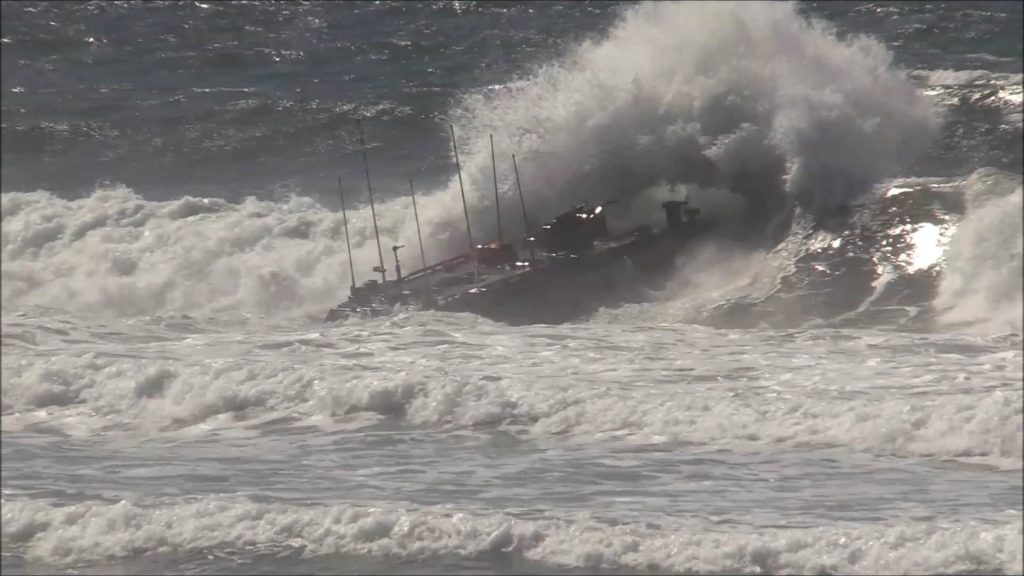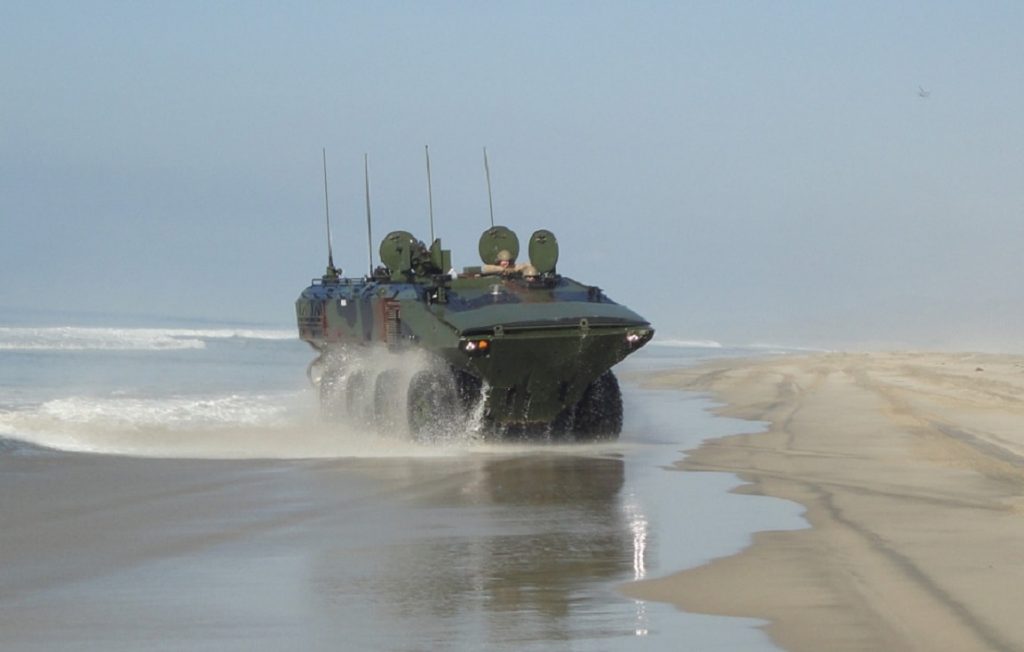Marine Corps’ new combat vehicles proved capable fully replacing predecessor
Posted on
The U.S. Marine Corps has announced that the new Amphibious Combat Vehicle offers ‘significantly greater survivability, mobility’ than the predecessor.
According to a statement, the Marine Corps’ Amphibious Combat Vehicle program reached another milestone, proving the vehicle’s ability to deliver future combat power from ship to shore and follow-on objectives. Program Executive Officer Land Systems recently completed testing on the ACV, which proved the new vehicles’ ability to not only take on challenging surf, but also complete a long swim from ship to shore and back.
These major accomplishments facilitated the program moving from what was originally envisioned as an incremental approach, to one that will be known as the ACV family of vehicles, without the nomenclature of ACV 1.1 or ACV 1.2
Most recently, the ACV program office successfully completed 1.2 anticipated requirement testing, and determined the ACV technologically capable of fully replacing the legacy AAV.
“We’ve landed on a vehicle that is very comparable in the ocean or in the water to the current AAV, with respect to performance,” said Col. Kirk Mullins, program manager for Advanced Amphibious Assault at PEO Land Systems. “We have a vehicle that has significantly greater survivability and mobility than the current platform, and one that—through demonstrated operational tests—the Marines are very happy with.”
Several capabilities were evaluated during recent testing, including the vehicle’s ability to embark and deploy off of an amphibious ship, its ship-to-shore threshold and a high-surf test, which subjected the vehicle to aggressive surf zones with waves reaching over six feet, said Mullins.
“The program office tested the vehicle to all of the ACV 1.2 transition requirements, and even subjected the vehicle to 9-foot waves without issues,” he said. “Because of this, the Marine Corps now was the opportunity to combine the program into a singular ACV family of vehicles program.”
The platform met the 1.2 requirements earlier than anticipated, which the program office credits in part to the competitive process by which the vehicle was selected.
“The success the program has achieved today has a lot to do with how the program was structured and how it’s been executed,” said Angelo Scarlato, ACV 1.1 product manager at PEO Land Systems. “The competition [between industry to produce the ACV] worked, from getting increased performance out of our industry partners and the vehicle at a reasonable price.”
Scarlato also noted with the ACV 1.1 meeting the 1.2 requirements ahead of schedule, the Corps is able to completely avoid the incremental engineering, manufacturing and developmental costs associated with developing a different ACV 1.2 vehicle.

With the completion of 1.2 transition requirement testing, the program office is shifting their focus to operational effectiveness and suitability, force protection and survivability, and logistical sustainability testing, said Scarlato.
“The two statutory tests we have to undergo are [Initial Operational Test and Evaluation] and [Full-Up System Level] live-fire testing,” he said. “For IOT&E, we’re looking at operational effectiveness and operational suitability of the platform. For FUSL, we’re looking at force protection and survivability.”
The ACV is intended to serve Marines for at least the next 20-plus years. With that in mind, Scarlato said the ACV would also undergo logistics demonstration testing.
“For this, we’re focusing more on the suitability and sustainment aspects of the platform,” he said. “We’re not just looking at how effective it is in a combat environment, but also how logistically supportable the platform is.”
In an unconventional move by the program office, Marine operators who tested the vehicle were given the opportunity to interface directly with the platform’s program managers and engineers—from both the AAA program office and BAE Systems—in order to provide constructive feedback on improving the vehicle’s design.
“There are some things that you just can’t capture from test reports and surveys that Marines usually fill out after these operational assessments,” said Mullins. “I wanted Marines to have a chance to physically put the ACV engineers and project officers on the vehicle to point out their suggestions for improvements, so when the engineers go back to their offices to design the fixes, they’d have a first-hand experience of what the Marines experienced.”
Mullins credits the project team and vehicle manufacturer for taking robust efforts to incorporate some of the Marines’ suggested changes, many of which will be included in the first release of ACVs later on this year. So far, the team has incorporated seven of the top feedback items provided by Marines. However, Mullins also wants Marines to know their additional feedback and suggestions could still be addressed in later builds of the ACV.

Aiming for continuous improvement by soliciting feedback is something the program office plans to carry into the future.
“We imagine doing something very similar with IOT&E, too,” said Scarlato. “It’s a continuous loop, soliciting feedback from your customer and designing changes to meet the customer’s needs.”
Subscribe to our newsletter
Promotions, new products and sales. Directly to your inbox.
